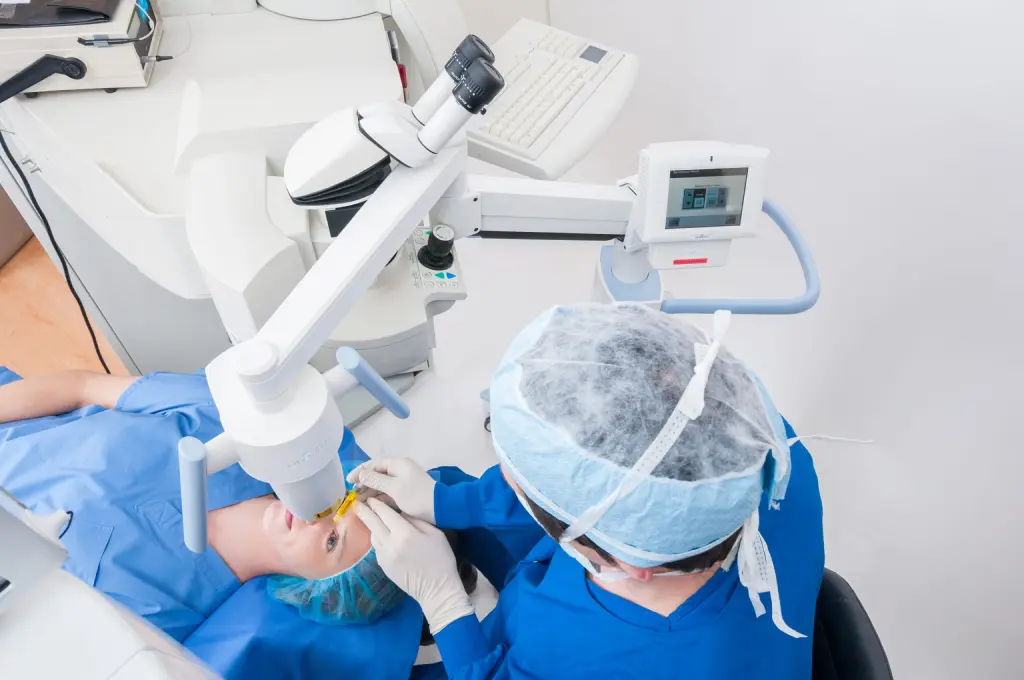Unapproved Cross-Linking Failure Leads to Vision Loss

When it comes to cross-linking for the treatment of progressive keratoconus, there is only one FDA-approved procedure proven to be safe and effective in slowing or halting progression to help preserve a person’s vision. iLink® works by creating new collagen cross-links and leads to the stiffening of the cornea. Any other corneal cross-linking procedures are unapproved, which means that NOT ALL corneal cross-linking treatments are the same.
“In the U.S., there currently are no cross-linking devices or drugs approved for epi-on cross-linking. When nonapproved procedures are performed, we currently don’t know the efficacy, and patients don’t get the benefit of insurance coverage for this otherwise covered, medically necessary procedure.”
Sumit Garg, MD
A doctor may offer corneal cross-linking, but that does not necessarily mean that it is iLink® FDA-approved cross-linking. In fact, unlike iLink®, unapproved drugs and devices have not been validated through randomized, controlled pivotal clinical trials and their manufacturing process has not been evaluated. Also, it is important to note that the iLink® epi-off procedure is eligible for insurance reimbursement.

If someone is treated with an unapproved cross-linking procedure, the FDA has not determined that the drug and devices used are safe and effective. If the procedure is not effective, the patient risks the continued progression of their condition and he or she may need to be re-treated with cross-linking or even worse – corneal transplant surgery. Many physicians in the Living with KC community have unfortunately seen this firsthand.
An Unapproved Cross-Linking Experience
Dr. Sumit “Sam” Garg, an Associate Professor of Ophthalmology, Vice Chair of Clinical Ophthalmology, and Medical Director at the Gavin Herbert Eye Institute at the University of California – Irvine, recently had to retreat a patient who received two non-FDA-approved – and ultimately unsuccessful – cross-linking procedures.

Before the 23-year-old male patient visited Dr. Garg, he received two cross-linking procedures that were performed with unapproved devices and drugs, which were ineffective in halting the progression of his keratoconus. When Dr. Garg met the patient, glasses were still able to adequately correct his vision, but he had lost a line of best-corrected vision and was becoming more myopic. After monitoring the patient to ensure that his keratoconus was indeed progressing, Dr. Garg determined that the best way to treat this patient was to perform iLink®, which is the only FDA-approved cross-linking procedure to slow or halt progression.
After weighing the risks, the patient decided to move forward with iLink®. Now, the patient is two months post-retreatment with iLink® and is doing well according to recent scans. When it comes to offering cross-linking for progressive keratoconus, Dr. Garg believes that physicians should “continue to use validated and approved technology and make treatment decisions based on the scientific evidence of which procedures have the best chance of protecting our patients from continued progression and preserving their vision for the future.”
In a recent article featured in Healio Ocular Surgery News, Dr. Garg discusses his experiences retreating this patient with iLink® FDA-approved cross-linking. To learn more, you can read the full article here.
Find a Doctor Near You
Search the directory to locate a doctor who is familiar with treating progressive keratoconus with FDA-approved iLink®.
Dr. Garg is a paid consultant for Glaukos.